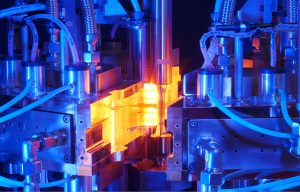DLR-TFCL
TA67 – DLR-TFCL
Location
Carl-von-Ossietzky-Str. 15
26129 Oldenburg, Germany

Description
The DLR coating laboratory is a large facility at the Institute of Networked Energy Systems, which serves as a modular research and development (R&D) production line for the manufacturing of novel thin film technologies. The primary goal is the system and material innovation in energy conversion, novel photovoltaic (PV) applications, radiative cooling, H2 technologies and concentrating solar power. The laboratory is used for the development and analysis of coatings and functional surfaces and their integration into prototype devices like PV windows, photo electrochemical cells, fuel cells and highly efficient and durable mirrors for concentrated solar power (CSP) heliostats. The laboratory is equipped with a variety of coating tools, front-end and back-end systems as well as numerous characterisation methods for the manufacturing of thin-film technologies. For the reliable and reproducible production - of high TRL prototypes, the laboratory infrastructure nears industrial level. It features many different state-of-the-art coating machines for implementing manufacturing processes that can easily be transferred to industry partners for mass production.
Description of the infrastructure:
This combination of inline systems for developing processes and prototypes at near-industrial scale is designed for a substrate size up to 30x30 cm². It includes the following systems:
- An industrial glass cleaning system
- A PECVD (plasma enhanced chemical vapour deposition) system for deposition of semiconductors (e.g. Si oxides and carbides) and for plasma treatment
- A magnetron sputtering system for deposition of transparent conductive oxides (TCO), metals, metal-nitrides, oxides and oxynitrides using pulsed DC, RF, HiPIMS and Bipolar-MF processes on planar and rotatable targets
- A lamination unit and an ultrasonic soldering station for bonding as well as contacting coated substrates for prototyping.
Another combined system for rapid prototyping and development of new functionalities and material combinations consists of a cluster tool with six process chambers and in situ robotic handling for substrates up to 10x10 cm². The system includes:
- Four PECVD chambers (primarily for germanium- and silicon-based plasma processes)
- Two sputtering chambers (primarily for metals, oxides and various TCOs)
- A PVD (physical vapour deposition) system for metallic coating and deposition of oxides as well as for O2 plasma etching
- A Langmuir-Blodgett coater for monolayer deposition of precursor material.
In addition to the described R&D manufacturing line, the Institute also has a well-equipped characterisation laboratory. This supports numerous characterisation methods for the manufactured thin-film technology demonstrators, such as a combined SEM (scanning electron microscopy) and FIB (focus ion beam) system, an ellipsometer, a Hall sensor, various spectrometers (UVvis, Raman, FTIR), plus a wide range of electrical and optical measurement methods.
Support offered under this proposal:
In addition to the supply of a up and running technical infrastructure described above, technical and logistic support for preparing, developing, manufacturing, and characterisation samples can be offered to the users. The scientific and technical stuff is well trained and has experience from several national and international R&D projects with industry and research partners.
Testing Capabilities
It offers services for developing and manufacturing novel thin film technologies, including coatings for PV windows, photoelectrochemical cells, and CSP heliostats. The facility provides support for the production of high Technology Readiness Level (TRL) prototypes, including coating and characterisation methods, with near-industrial scale equipment and expert technical support.
Technical Equipment
An industrial glass cleaning system, PECVD system for semiconductor and plasma treatment, magnetron sputtering system for TCOs, metals, and oxides, lamination unit, ultrasonic soldering station, a cluster tool with six process chambers, including PECVD and sputtering chambers, PVD system, Langmuir-Blodgett coater, SEM-FIB system, ellipsometer, Hall sensor, and various spectrometers (UV-vis, Raman, FTIR).
Additional information
Technology Readiness Level: 7 or above
Special considerations: N/A
Technology clusters: CSP/STE, Hydrogen, Materials for Energy, PV
Website: https://www.dlr.de/en/ve
Availability: All year
Provision of tools to prepare data sets in a FAIR way: Yes
